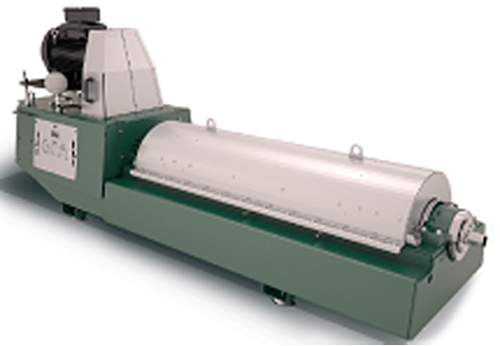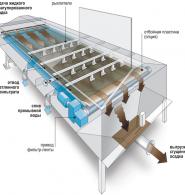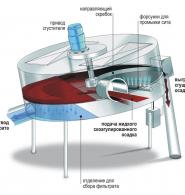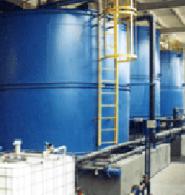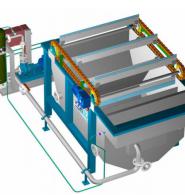Wastewater sludge dewatering centrifuge
A decanter centrifuge refers to a centrifugal apparatus used to separate media consisting of a solid and a liquid phase with different densities into separate fractions. A centrifuge consists of a conical-cylindrical drum, a screw inside the drum, a supply pipe, a drive system, bearing mechanisms, polymer dosing unit, a housing and a frame. Centrifuges are continuous-action devices.
Principle of the decanter centrifuge operation
The decanter centrifuges deposit solid particles with a density greater than the that of the liquid phase by the centrifugal force on the inner wall of a cylindrical (or cylindrical-conical) rotor, with settling heavier particles first and then lighter ones. The settled particles are transported by the screw to the discharge opening. To move the settled sediment particles, the screw rotates at a speed greater or less than the speed of the rotor. The effluent merges through the drainage openings in the rotor. Varying the diameter of the drain holes allows changing the quality of the effluent and the humidity of the dehydrated sediment. Centrifuges can achieve high rates of sludge dewatering with and without flocculant, which significantly expands their scope of application.
Advantages of the centrifuges:
- the possibility of dehydration of raw indigested sediments without the spread of unpleasant odors;
- possible reagent-free operation and with the use of flocculants;
- relatively less space required for equipment installation;
- relatively easy maintenance;
- relatively small consumption of flushing water;
- high specific capacity of the plant.



